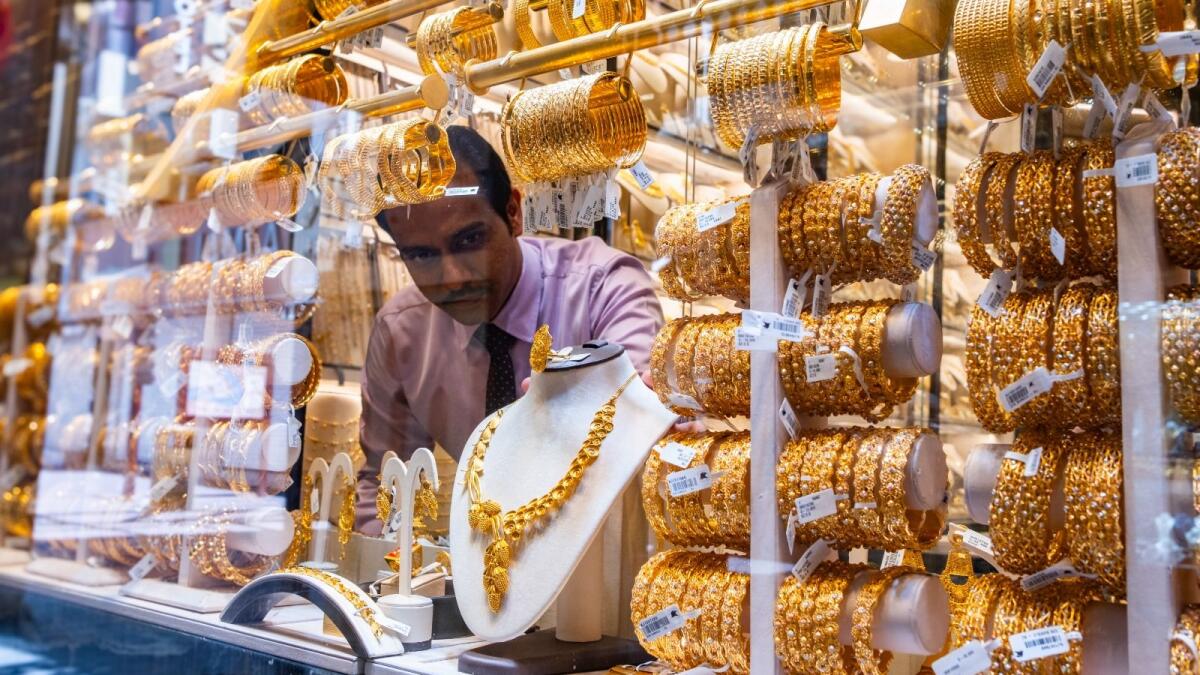Gold prices in Dubai started the week on a downward trend, with the 24K variant of the yellow metal dropping by half a dirham per gram to Dh302.25 per gram. Similarly, 22K, 21K, and 18K also opened lower at Dh279.75, Dh270.75, and Dh232.25 per gram, respectively. On a global scale, gold was trading at $2,495.45 per ounce at 9.06 am UAE time. Vijay Valecha, the chief investment officer at Century Financial, noted that gold continued its decline, trading just under the key psychological threshold of $2,500. This decrease in gold prices can be attributed to the strengthening US dollar and the surge in Treasury yields following the Core PCE Price Index remaining steady at 2.6 percent in July. Moreover, concerns about the slowdown of the Chinese economy, the world’s largest gold buyer, have also impacted gold prices.
Despite the recent dip in gold prices, Valecha highlighted that the precious metal has seen a 20 percent increase so far this year due to resilient demand from central banks, expectations of rate cuts, and haven demand arising from geopolitical tensions. Looking ahead, he mentioned that the increasing expectations of a potential interest rate cut by the US Federal Reserve in September could help limit gold’s losses. Lower interest rates would decrease the opportunity cost of holding non-yielding assets like gold. Valecha also pointed out that immediate support for the metal is expected near $2,470-75, while resistance is seen near the recent high of $2,531.
It is essential for investors and traders to stay up to date with the latest news and updates regarding the gold market. Keeping track of market movements, economic indicators, and geopolitical events can help make informed decisions when it comes to investing in gold. Additionally, following expert analysis and insights, such as those provided by Vijay Valecha, can offer valuable perspectives on the factors influencing gold prices and the potential trends in the precious metal market.
The current market conditions, such as the strengthening US dollar, surge in Treasury yields, and concerns about the Chinese economy, are affecting gold prices. These factors, combined with the resilience in demand from central banks and geopolitical tensions, have contributed to the overall upward trend in gold prices this year. Investors need to keep a close eye on developments in the global economy and geopolitical landscape to anticipate potential shifts in the gold market and adjust their investment strategies accordingly.
As Valecha mentioned, the outlook for gold prices will also be influenced by the actions of the US Federal Reserve and the potential interest rate cuts in September. Lower interest rates can make gold more attractive as an investment option, as it reduces the cost of holding non-yielding assets. Traders should monitor any announcements or decisions made by the Fed and other global economic indicators to gauge the direction of gold prices in the coming months.
In conclusion, the recent drop in gold prices in Dubai is reflective of the broader market trends, including the impact of the US dollar, Treasury yields, and concerns about the Chinese economy. Despite these challenges, gold has shown resilience and continues to be a valuable investment option for many investors. Staying informed, following expert analysis, and monitoring global economic indicators are essential strategies for navigating the gold market and making informed investment decisions. By keeping abreast of market developments and expert insights, investors can position themselves to take advantage of opportunities and mitigate risks in the ever-changing gold market.











